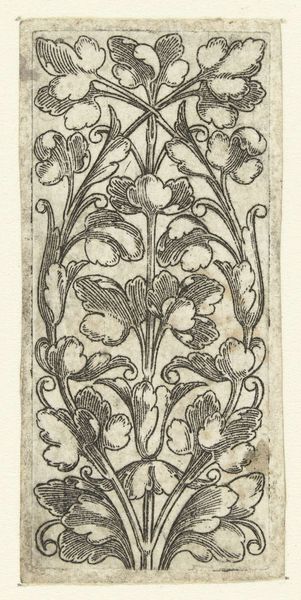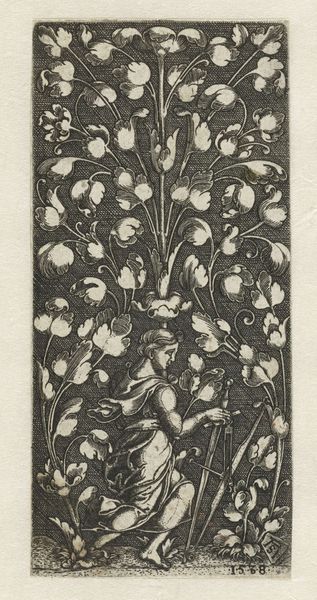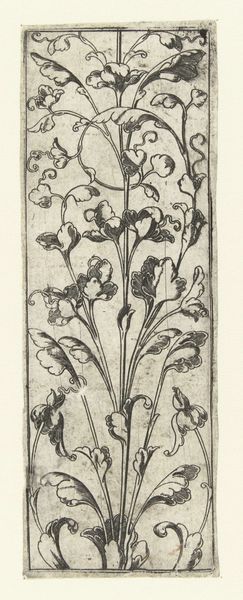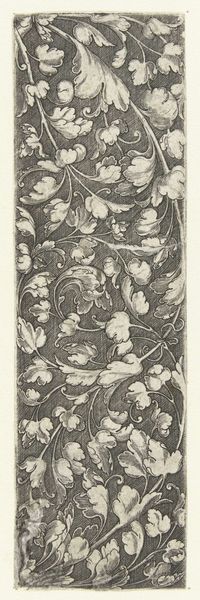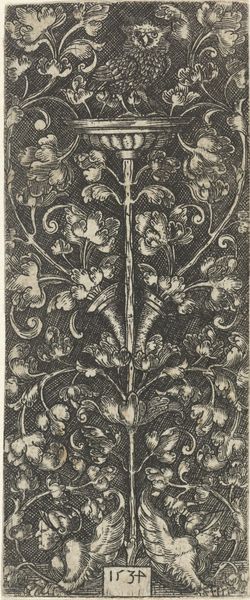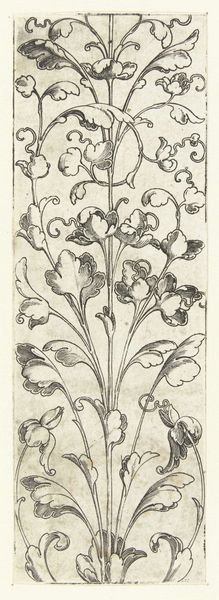
print, engraving
# print
#
old engraving style
#
woodcut effect
#
figuration
#
11_renaissance
#
linocut print
#
engraving
Dimensions: height 86 mm, width 34 mm
Copyright: Rijks Museum: Open Domain
This small, anonymous print depicts a child, seen from behind, surrounded by floral and foliate ornament. Such prints were produced in vast quantities across Europe from the late fifteenth century. Their modest scale belies a significant cultural function: pattern books like this one served as a vital means of disseminating visual ideas. In a world before photography, prints enabled the swift circulation of motifs and designs, influencing everything from tapestry and metalwork to ceramics and furniture. This particular example suggests a world of intricate decoration, easily accessible, but also available for use by artists and artisans. The child, rendered in simplified terms, acts as a kind of caryatid, mediating between naturalistic ornament and human form. As art historians, we can use resources like inventories, guild records, and surviving examples of decorative arts to better understand the role prints played in shaping visual culture. The meaning of art is always contingent on its social and institutional context.
Comments
No comments
Be the first to comment and join the conversation on the ultimate creative platform.
